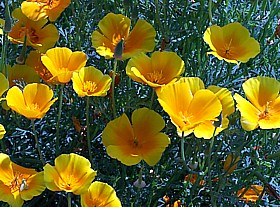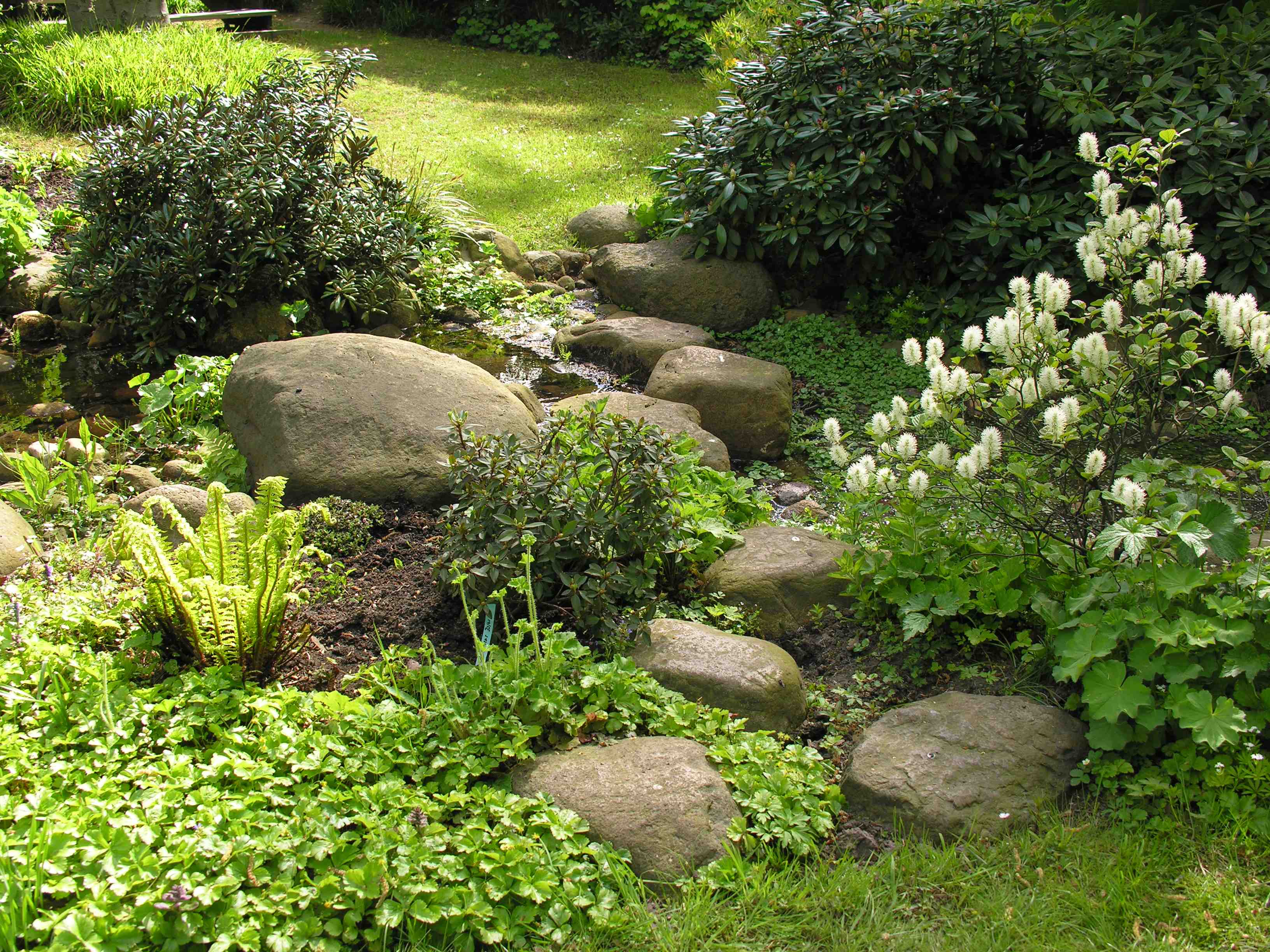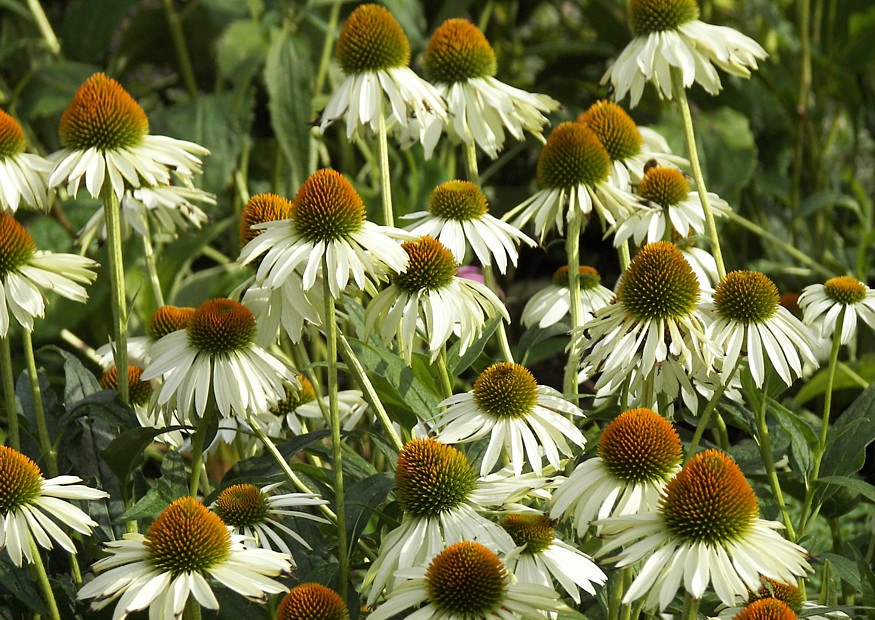Xeriscaping
is a method of gardening that involves choosing plants that are appropriate to their site and creating a landscape that can be maintained with little supplemental watering.
Xeriscaping is not a style or category of garden design. It is basically some common sense guides to gardening in harmony with your site and can actually be applied to any type of garden design.
Why is Xeriscaping Important?
The obvious answer is that we only have a finite amount of water and some years even less than others. By grouping plants by their water needs, using mulch and drought tolerant plants, you will be conserving on water usage.
You will also have healthier gardens and landscapes and less need to use fertilizers and pesticides. Consider that everything you do in your yard and garden will eventually effect your water source and from there, any nearby bodies of water. We hear a lot about pollution from industry and factories. These are considered “point sources”. Homeowners and individuals are considered “nonpoint” sources of pollution. While you may not think the fertilizer and bug spray you use on your plants is excessive, the combined runoff from all of us “nonpoint sources” is considerable.
By applying these simple techniques you will be conserving water and improving local water quality - all while still having a beautiful garden.

Principles of Xeriscaping
-
Planning and Design - Have a Plan. Take a look at your garden’s topography, exposure and soil. Don’t try to fight your site. Create planting zones and group your plants by their needs. For example, groups tough, drought tolerant plants in areas exposed to full day sun, give less tolerant plants some partial shade and keep the more delicate or demanding plants for a spot near your water source.
-
Choose Appropriate Plant Material - You may choose to incorporate a few plants that will need to be coddled, but for the most part, selecting plants that thrive in your area during low water conditions will give you the best results. This often includes native plants that we so often take for granted. The choice of plants will vary by region, even within a single yard. You may also be surprised to see how many plants are considered xeric, once they have established themselves and when properly cared for.
- Soil Improvement - The old adage that if you take care of the soil, the soil will take care of the plants, is very true here. The key, as always, is incorporating generous amounts of organic matter. This will improve water penetration and retention in any type of soil. Rich, loose, water holding soil will encourage good root development and lessen the plant’s need for supplemental water. It is best to amend your soil before planting and to regularly use organic mulch, as mentioned in Step 4.
- Mulch - Mulching is a naturally occurring process, but as gardeners we tend to want things tidy and we rake away all the leaves and debris that coat and decay into the soil. So we have to bring in more aesthetically pleasing mulch, such as shredded bark and compost.
However it gets there, mulch adds a great deal to your garden. It moderates soil temperature, holds moisture, slows erosion and suppresses weeds that would compete with your plants for food and water. It also gradually decomposes and feeds the soil. Apply about 4 inches of mulch at the initial planting and check it each season to see if it needs to be replenished.
- Practical and Appropriate Turf Areas - Most of us still want some areas of lawn in our landscape and many of us want way too much lawn. Think about how much water, fertilizer and gasoline it takes to keep your lawn green throughout the summer.
Where to place the lawn should be part of your initial design plan, taking into consideration what you plan to use your lawn for. If you are using grass as a ground cover, there are other options that would be less labor and water intensive.
Choose an appropriate grass seed for the lawn’s exposure. Different seeds do well in different regions.
- Efficient Watering - Not all plants need the same amount of water and those needs may change with the seasons. If you’ve followed the steps above, you have your plants grouped by their water needs, including your lawn, and can water only where it’s needed.
Drip irrigation systems are often recommended for efficient watering. These systems allow you to control when and how much water a plant gets and to direct the water only to the plants that need it.
Base your watering schedule on the needs of the plants and not on an arbitrary schedule. All plants will require more supplemental watering for the first year or two that they are becoming established. However after they have acclimated and developed a good root system, supplemental watering should become much less frequent.
- Appropriate Maintenance - Yes, even a xeriscape garden will require some maintenance. Watering, weeding, pruning, deadheading and sensible pest management will all factor into the quality of your garden.

Many plants will continue to grow just fine in drought conditions, if they have been selected wisely and were allowed to establish themselves before being stressed by drought. No plant will survive forever without some water and different plants will thrive in different regions and conditions, here is a partial list of great garden plants:
Drought Tolerant Plants
- Achillea (Yarrow)
- Alyssum
- Artemisia
- Asclepias (Butterfly Weed)
- Beebalm
- California Poppy
- Campanula carpatica (Bellflower)
- Campis (Trumpet vine)
- Coreopsis
- Cosmos
- Cranesbill Geranium
- Daylily
- Echinacea Coneflower
- Euphorbia
- Gaillardia
- Goldenrod
- Greek oregano
- Heliopsis
- Hosta
- Iris
- Kniphofia (Red Hot Poker)
- Lamb’s Ears
- Lavender
- Liatris
- Nasturtium
- Nepeta Catmint
- Penstemon
- Perovskia (Russian Sage)
- Portulaca
- Rudbeckia
- Salvia nemerosa
- Sedum
- Tradescantia (Spiderwort)
- Veronica
- Zinnia
Grasses
- Feather Reed Grass (Calamagrostis acutiflora)
- Fescue
- Fountain Grass (Pennisetum)
- Maiden Grass (Miscanthus)
- Switch Grass (Panicum)
Shrubs
- Amelanchier (Shadbush)
- Aronia (Chokeberry)
- Buddleia (Butterfly Bush)
- Caryopteris
- Cotoneaster
- Hypericum (St. Johnswort)
- Juniper
- Potentilla
- Cytisus (Scotch Broom)
- Viburnum
more to come...
